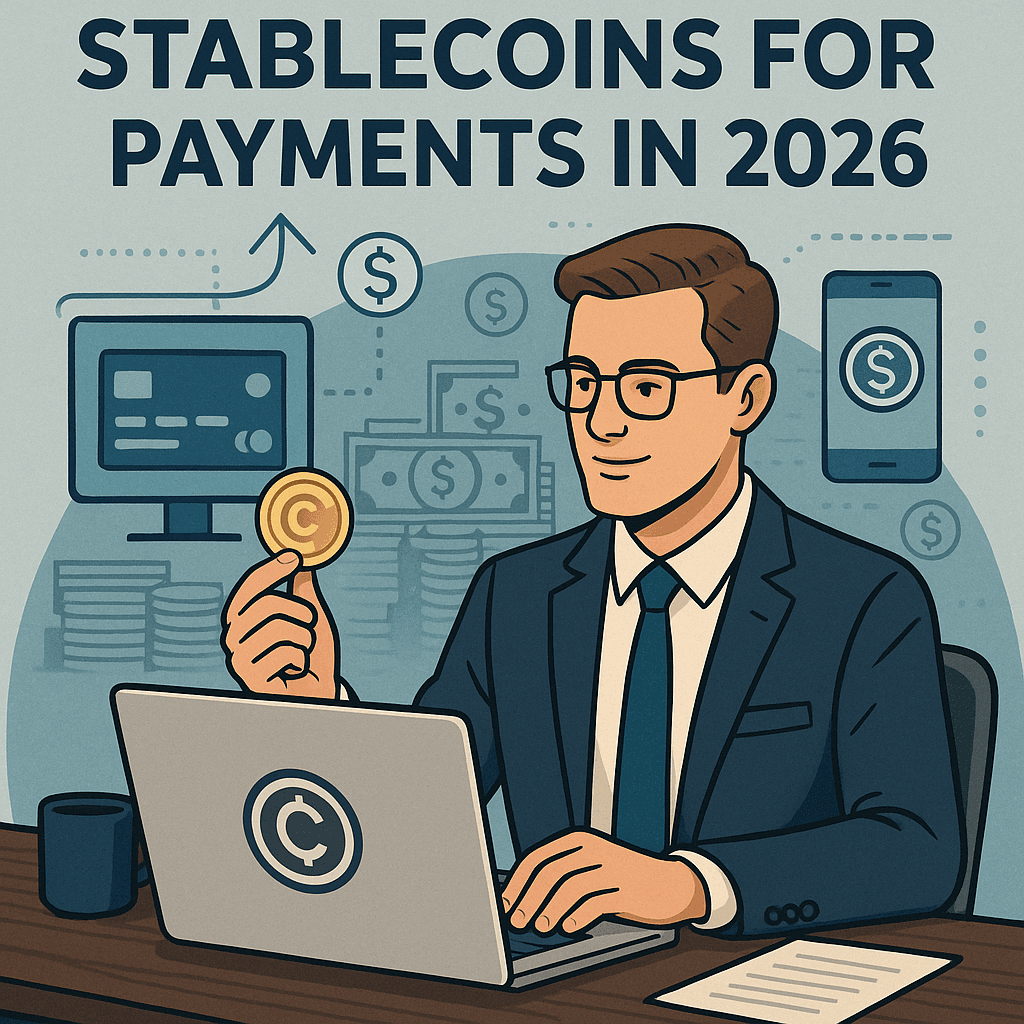Latin America's Stablecoin Dominance
Latin America has become the world's testing ground for stablecoin infrastructure. The region processed $1.5 trillion in crypto transactions through 2025, with stablecoins accounting for 48% of all regional crypto activity. Brazil alone recorded $318.8 billion in crypto value, Argentina followed with $93.9 billion, and Mexico contributed $71.2 billion to regional volumes.
The numbers reveal more than growth. They show transformation. In countries where traditional finance fails, stablecoin adoption fills critical gaps in payment infrastructure, savings mechanisms, and cross-border transfers.
Economic Crisis Drives Stablecoin Adoption
Hyperinflation Creates Immediate Need
Argentina's inflation exceeded 100% in 2024, with rates hitting 200% in 2023. Venezuela experienced similar currency collapse, creating urgent demand for stable value storage. When national currencies lose purchasing power overnight, digital dollars become essential, not optional.
Stablecoin purchases on exchanges like Bitso spike immediately following currency devaluations. When Argentina's peso dropped below $0.002 in December 2023, monthly stablecoin trading jumped to $10 million. This pattern repeats across every LATAM country facing monetary instability.
For Colombian Peso, Argentine Peso, and Brazilian Real, stablecoin purchases represent over 50% of all exchange purchases between July 2024 and June 2025. This dominance reflects persistent inflation, currency volatility, and capital controls driving households and businesses toward dollar-linked stability.
Capital Controls Force Digital Alternatives
Currency restrictions compound inflation problems. Argentine citizens can only save $200 monthly at official exchange rates through traditional banks. The alternative black market dollar trades at significantly higher rates, creating risk and uncertainty.
Stablecoins provide a third option: digital access to dollar value without government limits or black market dangers. This drives Argentina's 61.8% stablecoin share of total crypto volume, well above the global average of 44.7%.
Banking Exclusion Opens Opportunities
Large portions of Latin America's population lack traditional banking access. Stablecoins deliver payment rails, savings products, and cross-border capabilities to people traditional finance never reached. This financial inclusion drives adoption beyond inflation hedging.
Cross-Border Payments Transform Remittances
The $61 Billion Mexico Opportunity
Mexico ranks as the world's second-largest remittance recipient, with $61 billion flowing annually from the United States. Traditional channels charge 6-8% fees, consuming significant portions of funds migrant workers send to support families.
Stablecoins reduce these costs to under 1%, saving senders more than 98% in fees while accelerating settlement from days to minutes. For families dependent on these transfers, the savings matter enormously. A $200 monthly remittance loses $12-16 to traditional fees but less than $2 through stablecoin rails.
In 2024, crypto remittances to Mexico reached $800 million to $1.2 billion, representing 2-3% of total remittances. Bitso alone processed $6.5 billion in transactions, with stablecoins dominating cross-border transfers. This percentage will likely reach 30% within three to five years as infrastructure matures.
Regional Corridors Demonstrate Value
The Colombia-Venezuela corridor shows stablecoins reducing transfer costs and settlement times for crisis-driven migration patterns. Given Venezuela's economic collapse and 25% population exodus since 2014, efficiency gains prove critical for both senders and recipients managing daily expenses.
Across Latin America, 71% of users report using stablecoins for cross-border transfers, significantly exceeding the global average of 49%. This leadership position reflects both urgent need and mature infrastructure supporting real-world applications.
Institutional Infrastructure Enables Scale
Banks and Fintechs Deploy Operational Systems
Latin American financial institutions moved beyond exploration to execution. According to recent surveys, 86% have established partnerships supporting stablecoin integration, while 71% report their infrastructure including wallets and APIs is operational.
Only 7% cite lack of internal expertise as barriers, the lowest rate globally. This confidence enables institutions to deploy quickly rather than study indefinitely.
Brazil's Mercado Bitcoin, Foxbit, Bitso, and Caivest launched BRL1, a stablecoin pegged to the Brazilian Real and backed by currency and government bonds. The project enables direct exchange flows and explores international listings for real-time settlement globally.
Colombia's Bancolombia launched Wenia, trading Bitcoin, Ether, and USDC alongside COPW, a peso-backed stablecoin. This integration between crypto and traditional banking demonstrates how established institutions build bridges rather than barriers.
Transaction Volumes Double
Stablecoin transaction volumes through platforms like Bitso Business doubled between late 2024 and mid-2025. Payment service providers experienced 68% growth, while gaming saw 5.3x increases. This acceleration reflects operational deployment, not speculative hype.
New use cases emerged beyond basic remittances. Foreign exchange, treasury management, and arbitrage operations now account for 45% of institutional stablecoin volumes in LATAM, up from primarily remittance-focused applications.
Companies processing $10 million daily, like Global66, use stablecoin infrastructure for treasury optimization, reducing operational costs by 60% through intelligent flow netting between deposits and payouts.
Regulatory Frameworks Provide Certainty
Brazil Leads With Comprehensive Regulation
Brazil's Virtual Assets Law (BVAL) established clear requirements for crypto firms including KYC and transaction reporting. The Central Bank (BCB) serves as the AML/CFT authority, providing regulatory certainty for institutional adoption.
The BCB recognizes stablecoins as actual infrastructure for Brazil's crypto economy, not merely speculative assets. Public consultations address operational norms for Virtual Asset Service Providers, with specific attention to stablecoin integration into payment systems and international currency markets.
Brazilian regulators plan expanded frameworks for 2025 covering stablecoin-specific legislation, asset tokenization, and DeFi platforms. This proactive stance positions Brazil as Latin America's regulatory leader.
Regional Approaches Balance Innovation
Argentina advanced through regulatory sandboxes, issuing licenses for virtual asset service providers and legally recognizing tokens backed by real assets. This enables experimentation within defined boundaries while building comprehensive oversight.
Mexico's pragmatic acceptance, while less formalized, shows institutional interest without explicit prohibition. The Central American Monetary Council studies proposals for regional stablecoins supporting currency stability across multiple countries.
Only 29% of Latin American institutions cite regulatory uncertainty as barriers to stablecoin adoption, compared to 41% globally. This confidence stems from clearer frameworks and more predictable regulatory evolution than markets where rules remain contested.
Technical Infrastructure Supports Growth
Multi-Chain Strategies Expand Access
Circle expanded USDC supply into Brazil and Mexico through connections to regional real-time payment networks like PIX and SPEI. By integrating with existing rails, stablecoins become accessible through familiar interfaces rather than requiring entirely new systems.
PayPal's PYUSD operates on Ethereum, Solana, and Stellar, enabling users to choose blockchain networks based on cost, speed, and ecosystem preferences. This flexibility matters in markets where transaction fees directly impact whether solutions remain economically viable for small transfers.
Platform Development Enables Integration
Bitso's subsidiary Juno issues and holds digital assets including stablecoins specifically for cross-border payments. Rather than pure speculation platforms, these companies build for operational use cases businesses actually need.
Infrastructure providers offer programmable capabilities without requiring businesses to rebuild entire technology stacks. This bridges gaps between blockchain-native and traditional finance operations, enabling faster adoption.
Enterprise and Institutional Momentum
Major Financial Institutions Deploy
Nubank, Latin America's largest digital bank, announced stablecoin integration into its ecosystem starting with credit card transactions. This brings stablecoin functionality to millions through established banking relationships.
Traditional payment networks entered the space. Zelle announced stablecoin integration for cross-border transactions flowing to and from the United States. Given Zelle's integration into major US banks, this extends stablecoin access to mainstream banking customers on both sides of remittance corridors.
Visa piloted pre-funded stablecoins through Visa Direct using Circle's USDC and EURC for faster, more flexible cross-border payments. Mastercard separately partnered to enable stablecoin spending across multiple countries.
Customer Demand Drives Deployment
Surveys show 75% of Latin American firms noted growing customer interest in stablecoin-based products. This demand-driven response, not supply-side innovation, explains rapid deployment timelines.
Financial institutions cite customer demand (40%) and market expansion (33%) as primary adoption drivers, more than any other region globally. Companies respond to clear market signals rather than speculative positioning.
Real-World Use Cases Expand
Beyond Remittances Into Treasury
While cross-border transfers drove initial adoption, applications expanded rapidly. Treasury management now represents 45% of institutional stablecoin volume, up from primarily remittance-focused use.
Companies hold stablecoin balances between conversions, generating 6-9% annual yields on otherwise idle capital through DeFi protocols. This transforms payment float from cost centers into revenue generators.
New Verticals Emerge
Gaming experienced 5.3x growth in stablecoin adoption during first half 2025. These platforms use stablecoins for in-game economies, cross-border player payments, and merchant settlements, enabling features impossible with traditional systems.
Lending and credit access expand through on-chain history. People access crypto-backed loans for vehicles or homes, circumventing traditional requirements that excluded them from financial systems.
Market Leadership and Global Implications
LATAM Sets Standards
Latin America demonstrates digital currencies addressing real problems when deployed thoughtfully. Rather than speculative hype, the region shows stablecoins working as intended: stable value stores, efficient payment rails, and accessible infrastructure for underserved populations.
Other emerging markets watch closely. Sub-Saharan Africa, where stablecoins account for 80% of crypto transaction volumes, follows similar adoption patterns. Southeast Asia shows comparable trends in high-inflation economies.
Competitive Positioning for Infrastructure
The programmable nature of stablecoin infrastructure creates opportunities traditional payment providers cannot match. Real-time treasury positioning, automated compliance, and yield generation on payment float fundamentally change payment economics.
Infrastructure providers enabling financial institutions to leverage programmable money capabilities without rebuilding technology stacks will capture disproportionate value as adoption accelerates globally.
What Institutional Players Need to Know
Adoption Timeline Accelerating
Momentum shows no signs of slowing. Institutional adoption increases as regulatory frameworks solidify. Banks and traditional institutions, having observed success from sidelines, begin active deployments bringing legitimacy, capital, and distribution.
New verticals will emerge as programmable money capabilities become better understood. Supply chain finance, insurance, gaming, and digital commerce represent categories where stablecoin infrastructure enables business models impossible with traditional payment rails.
Infrastructure Requirements
Successful deployment requires comprehensive infrastructure addressing custody, compliance, yield optimization, and programmable workflows. Single-purpose point solutions create integration challenges as use cases expand.
Platforms offering unified infrastructure for stablecoin operations, treasury management, and programmable features enable faster deployment and easier scaling than fragmented approaches.
The Future of Programmable Money
Latin America's stablecoin revolution demonstrates what happens when technology meets genuine need. The region adopted stablecoins because traditional systems failed to provide basic financial services at reasonable costs.
This matters for every market eventually. As programmable money infrastructure matures, efficiency gains, cost reductions, and new capabilities become available everywhere. The difference is urgency. Latin America needed solutions immediately. Other markets can wait, but competitive advantages won't wait for them.
The stablecoin revolution is happening. Latin America isn't following trends. It's setting them. Financial institutions globally should study Latin American implementations, learn from operational experience, and prepare for similar adoption patterns as infrastructure matures and use cases become clear.
For businesses looking to leverage stablecoin infrastructure for treasury management, cross-border payments, or programmable workflows, the Latin American experience provides validated templates and proven use cases. The hard lessons learned through actual deployment are more valuable than theoretical frameworks developed without real-world testing.
Key Takeaways:
Latin America processed $1.5T in crypto with 48% in stablecoins
71% of LATAM users employ stablecoins for cross-border transfers
Institutional stablecoin volumes doubled between H2 2024 and H1 2025
Brazil leads with $318.8B in crypto transactions and comprehensive regulation
Gaming sector saw 5.3x growth in stablecoin adoption
Treasury and FX operations now represent 45% of institutional volume



